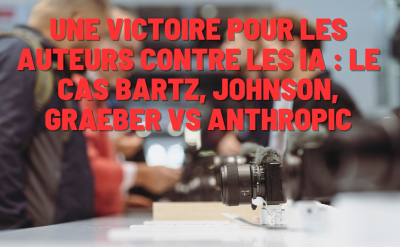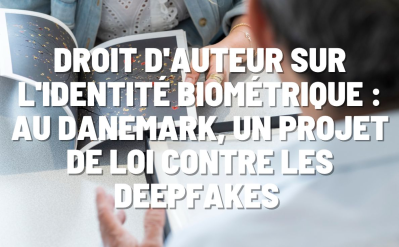News

Legal issues relating to artificial intelligence (1)
Law rarely precedes fact. In general, when lawyers take up a subject, it's because it is, if not firmly established in practice, at least sufficiently emerging for its deleterious effects (potential or proven) to come to light. In this case, they provide a legal framework for a situation that pre-existed their reflections and developed in a vague or unsuitable normative context.
And so it is with artificial intelligence. Machine learning, machine-assisted thinking tasks and hybrid machine/human productions are not so recent. But the popularity of ChatGPT, MidJourney and others has raised questions about the status and processing of input data and output from these systems.
1. Protected works used as training data by AI systems
Like human intelligence, AI needs to learn from experience in order to develop its capabilities. To do this, it relies on large volumes of data to "train" itself to perform the task expected of it. Using algorithms, machine learning enables AI to discover recurring patterns in the data it is supplied with en masse, and to adjust its behavior as it is confronted with new occurrences. It learns through positive or negative reinforcement, and improves autonomously.
What we call training data is that which is repeatedly supplied to the machine to enable it to refine its predictions and thus the relevance of its answers. They are generally taken from content available on the Internet, but make no distinction at this stage between content protected or unprotected by the various national copyrights.
So the artists and their beneficiaries went to court to assert their rights.
In the USA, 3 artists have filed a joint complaint against Stability Diffusion, Midjourney and DeviantArt for infringement of their copyright, right of publicity, unfair competition and violation of terms of use. They denounce the unauthorized, uncredited and unpaid exploitation of their works by AI systems. Getty Image has taken similar action against Stable Diffusion.
U.S. law, however, permits "data mining" within the framework of fair use. Fair use, an exception to US copyright law, covers the purposes of criticism, comment, news reporting, teaching or research, and is assessed according to 4 criteria:
- what is the nature of the use? (in particular: non-profit? commercial?)
- What is the nature of the work copied (fictional or factual)?
- What is the volume and importance of the part used in relation to the overall work?
- What is the effect of this use on the author's ability to profit from his work?
In other words, we're eagerly awaiting the outcome of this case law.
In Europe, while bitter discussions around the DAMUN directive established the principle of remuneration of authors by Internet platforms, the same directive enshrined data mining as an exception to copyright in article 4, without any particular upheaval. This European right to search also applies to copyright-protected content that is freely accessible on the Internet. For research purposes, the exception is unlimited. For commercial purposes, it exists unless rights holders expressly object to the search "in an appropriate manner, in particular by machine-readable processes".
We still need to be sure that the creators of training databases, and consequently AI systems, will respect these author refusals.
2. What regime for AI production?
(to be followed here https://www.upp.photo/fr/news/questions-de-droit-liees-a-l-intelligence-artificielle-2-3150)
Stéphanie de Roquefeuil







No comment
Log in to post comment. Log in.